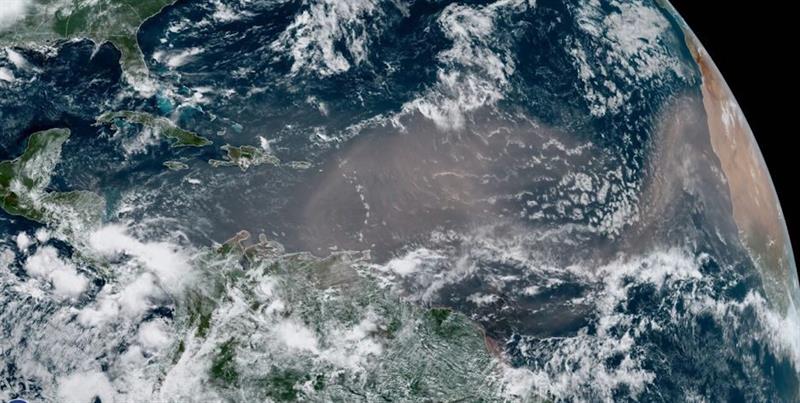THE SAHARAN AIR LAYER CAUSES LOW VISIBILITY, POOR AIR QUALITY.
 A large plume of Saharan dust will continue to affect the Caribbean region for the next
A large plume of Saharan dust will continue to affect the Caribbean region for the next
few days, causing low visibility and poor air quality, stated the Saint Lucia Met. Services, Monday.
The Saharan Air Layer (SAL) is a mixture of sand and dust from the Sahara Desert. The dry, dusty air mass forms regularly over the Sahara Desert during late spring, summer and early fall. High winds blow the dust westward over the tropical Atlantic Ocean intermittently.
A NASA satellite first observed the dust plume over the North Atlantic Ocean about June 13. By June 18, the dust from Africa’s west coast had extended to the lesser Antilles.
The dust can be hazardous due to lower visibility, while dust particles can exacerbate the symptoms of respiratory illnesses and allergies. Alternatively, the dry air results in less tropical storm activity and more colorful sunsets. The dust also helps build beaches and fertilize soils, NASA states.
Customarily, winds pick up millions of tons of dust particles from the deserts of Africa and blow them across the Atlantic Ocean each year. The plumes are an annual occurrence in most of the Windward Islands of the Caribbean.
The St. Lucia Met. Office advises small craft operators and sea bathers to exercise extreme caution due to brisk winds, rough seas and low visibility.